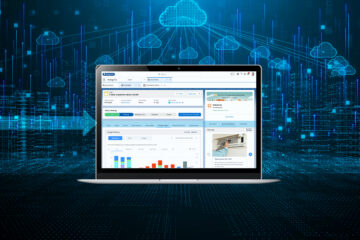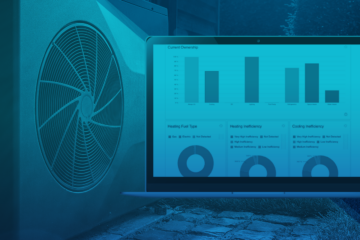Learn how AI-powered TOU disaggregation science provides utilities with more precise customer energy usage insights than any other analytics approach before, delivering value and operational efficiencies across the enterprise. Download the Whitepaper.
As the industry pioneer in disaggregation, Bidgely is once again advancing energy data science with Time of Use (TOU) disaggregation that breaks down consumption to never-before-achieved granularity. This new level of precision opens up a new world of possibility for utilities and energy retailers, including both previously impossible applications as well as essential business intelligence to inform strategic planning and decision making.
Established disaggregation methods — both software- and hardware-based — successfully break down total energy consumption data on a device category or device-by-device basis and at a daily, weekly, monthly or bill cycle frequency. These insights empower both utilities and their customers with personalized appliance-specific energy use data to inform better energy decisions.
TOU disaggregation uses sophisticated machine learning models and signal processing algorithms to take actionable insights to the next level by defining energy consumption patterns at the AMI sampling frequency.
Consider utility bill applications, which have historically been one of the core use cases for disaggregated energy data. Imagine if credit card statements only identified spending based on categories — i.e. you spent $500 on restaurants, $200 on groceries, $170 on gas, etc. That is how the information in traditional disaggregation-informed utility bills is organized — they break down energy usage by appliance category. It is a helpful but insufficient metric. The detailed credit card statements that we actually receive tell us how much we spent each time we went to a restaurant, grocery store or gas station. Similarly, TOU-disaggregation-informed utility bills itemize energy usage by each instance of appliance use within a given day, hour or shorter TOU increment — which is a far more meaningful metric.
The Data Science Behind TOU Disaggregation
To see the power of TOU disaggregation in practice, let’s first examine electric vehicle extraction. EVs draw more power than virtually any other residential appliance and there is significant momentum to dramatically increase EV adoption, making understanding and impacting customer behavior related to EV charging a critical utility challenge.
There are three main types of EV chargers: L1, L2 and L3. L1 chargers draw less power while L2 and L3 chargers draw much higher power but run for relatively short periods of time. BIdgely’s TOU disaggregation algorithm not only detects the presence of L1/L2/L3 chargers but also provides an accurate charging estimate to the time-of-day-level.
The heatmap below shows L2 charger consumption extracted out of a customer’s total energy usage, and the resulting residual energy.
Insights such as the time at which a customer usually charges an EV, any variations in seasonal charging time or duration and more enables hyper-personalized communication and tailored service that improves the customer experience and helps utilities better achieve strategic goals. For example, this can be used to target and encourage off-peak charging behavior through education & near-real time nudges.

EV Charging Activity in Customer Web Portal Powered by Bidgely
Cooling extraction provides another revealing example of the power of TOU disaggregation. Globally, cooling units are one of the largest contributors to total summer season energy consumption. To be truly impactful, disaggregation must be sophisticated enough to pinpoint what type of cooling appliance is in use — including split units, heat pumps, packaged units, mini split, PTAC or a combination of cooling units running concurrently. Some units run according to a schedule, while others may be left on to run throughout the day.
The heatmap below shows cooling estimates accurate to the data sampling level, extracted through a collection of classification and regression models. It is worthwhile to note both an on-demand and all-day use of cooling, which indicates the presence of multiple cooling units. The attributes help us in building probabilistic classification models to identify different types of cooling units along with their efficiency and capacity.
Similar granular TOU disaggregation can be applied to pool pump, heating, water heater, lighting and refrigerator extraction.
TOU disaggregation of non-signature entertainment, cooking and laundry appliances is also possible, but leverages a different analytical approach because appliance categories such as laundry, cooking and entertainment do not exhibit discernable signatures in raw energy data at AMI sampling rates. Hence, in order to estimate their TOU consumption, Bidgely’s algorithms shift from pattern recognition to user-profile-based analysis to discern further insights about probable appliance usage hours and reveal the TOU disaggregation of non-signature appliances.
Powerful Applications of TOU Disaggregation Intelligence
TOU disaggregation produces next-level customer and grid intelligence that can be applied to improve outcomes across operational areas, and help utilities and energy retailers both define and achieve strategic goals.
Demand Side Management (DSM): DSM programs are designed to encourage consumers to use less energy during peak hours, or to shift their time of energy use to off-peak hours. TOU disaggregation, enables utilities to pinpoint the precise customer set to target with DSM programs, and to generate personalized recommendations for those customers that more successfully alter consumption patterns with lower outreach costs.
Grid Planning and Management: ToU disaggregation helps utilities understand consumer energy needs and behavior within a given geographic area, which better informs rate-plans and makes it possible to boost infrastructure at a micro-level to manage load and increase revenue without negatively impacting user satisfaction.
Energy Efficiency: Maximizing energy efficiency is, and will remain, a top utility priority. As with DSM programs, TOU-level disaggregation more granularly identifies EE program target populations and enables one-to-one customer communications that feature hyper-personalized, actionable insights for achieving energy efficiency together with utility marketplace offers to repair or replace inefficient or degrading appliances.
Customer Satisfaction: Insights based on granular disaggregation better explain customer energy consumption to empower customers while also equipping customer representatives to more efficiently and effectively handle customer queries and deliver satisfactory resolutions.
The more granular the data analytics capability, the more targeted, precise and successful utility programs can be. Bidgely’s AI-powered TOU disaggregation science provides utilities with more precise customer energy usage insights than any other analytics approach before, delivering value and operational efficiencies across the enterprise.
To learn more about putting TOU disaggregation to work for you download the whitepaper.


